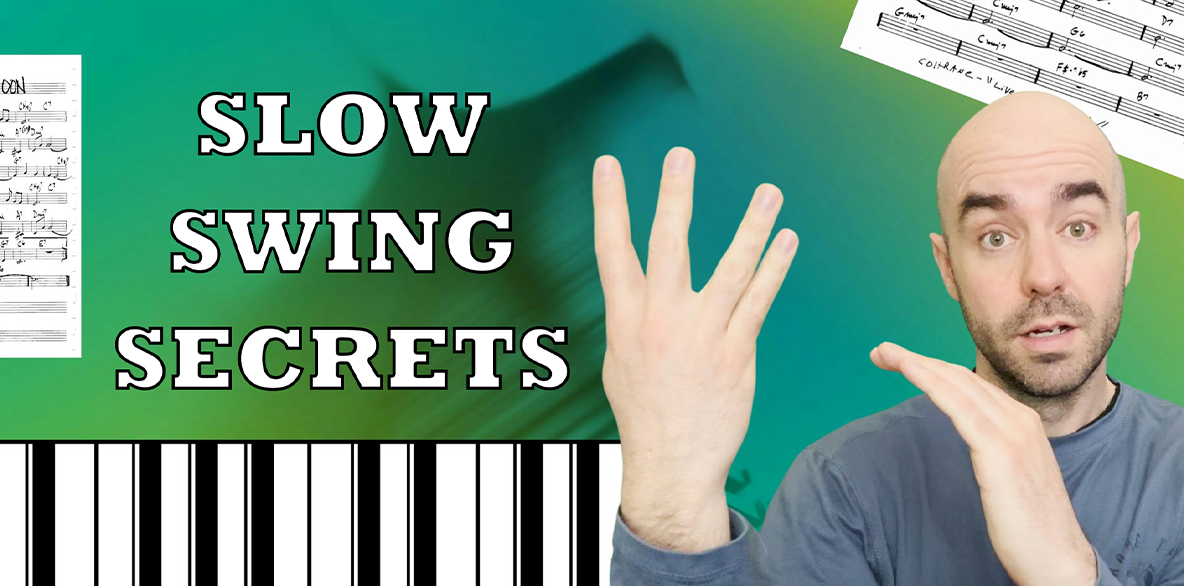Wes Montgomery is frequently overlooked when talking about the GREAT jazz soloists. Montgomery’s approach to jazz improvisation should be utilized by ALL soloists but especially pianists. Instead of focusing on specific harmony or rhythm devices used, the core of Wes’ improvisation come from his use of different textures to develop ideas. Pianists can take full advantage of the Wes Montgomery Model and instantly have developed solos just by changing the texture of their ideas.
The Wes Montgomery Solo Model
Level 1: Single-Line Melodies
Most (I’m hesitant to say all, but definitely most) Montgomery solos begin with single line ideas. He is steeped in the be-bop language and amazing at executing great eighth-note lines.
Level 2: Simple Ideas in Octaves
After a chorus or two of single-line ideas, Montgomery usually moves on two simple ideas played in octaves. By doing this, Montgomery increases the intensity not by playing more notes, but by creating a fuller sound through the use of octaves. (Pianistic Note: This is probably easier to do on piano then guitar).
Level 3:Simple Ideas in Harmony
During the last chorus of most(!) Montgomery solos, he typically plays simple, be-bopish ideas in harmony. At this point, he has created the thickest texture possible, basically by default. Even is his ideas aren’t the greatest, by following this structure the solo has developed to a point where the energy will be very high.
These Levels in Actions
Here is a short Montgomery solo where he utilizes these three levels in a delightful 2 chorus solo.
[x_video_embed] [/x_video_embed]
- Level 1: 1:02
- Level 2:1:26
- Level 3:1:36
Applying this to the Piano
I’m sure the are many instances where pianists use this same structure (whether it was pre-planned or not). It is a fantastic way to plan out your solo ahead of time and develop ideas. By forcing yourself to go through these steps, you will create an interesting solo and the more you do it, the more success you will have.
What if we reversed the steps?
Well, as with most things, we should also be very comfortable reversing these steps and creating a solo that thins out (instead of thickens). There are lots of instances where you might be playing a killin’ trumpeter or saxophonists who has built up a solo and the band has a ton of energy. In many instances, the band drops down for the next soloists. What if, instead of dropping down (or resetting), the energy stayed up. If you start a solo with the third Level, idea voiced out in full chords, you could probably convincingly make the rhythm section stay in a high energy mind-set. If you followed that with Octaves and then your last chorus was single-line ideas, you could be probably create a very effective solo that has a unique shape.
Conclusion
Montgomery is a fantastic soloist who is overlooked WAY to much. Give him a listen. Many of his recordings feature Wynton Kelly – a must listen for ANY jazz pianist.
By Sam Griffith
For more about Sam visit his webpage – www.samuelgriffith.com and his jazz blog www.dizzylandjazz.com.












